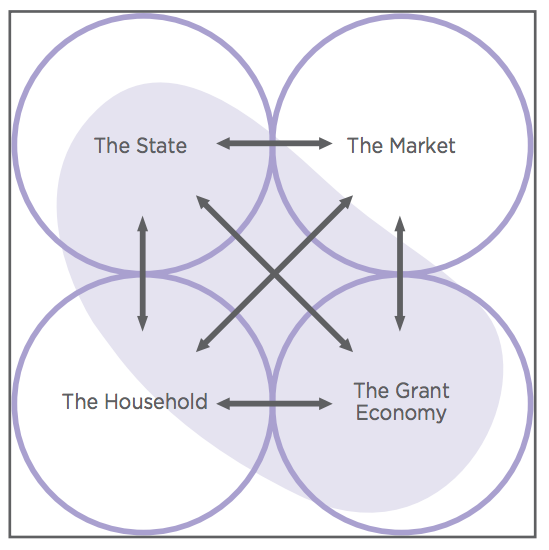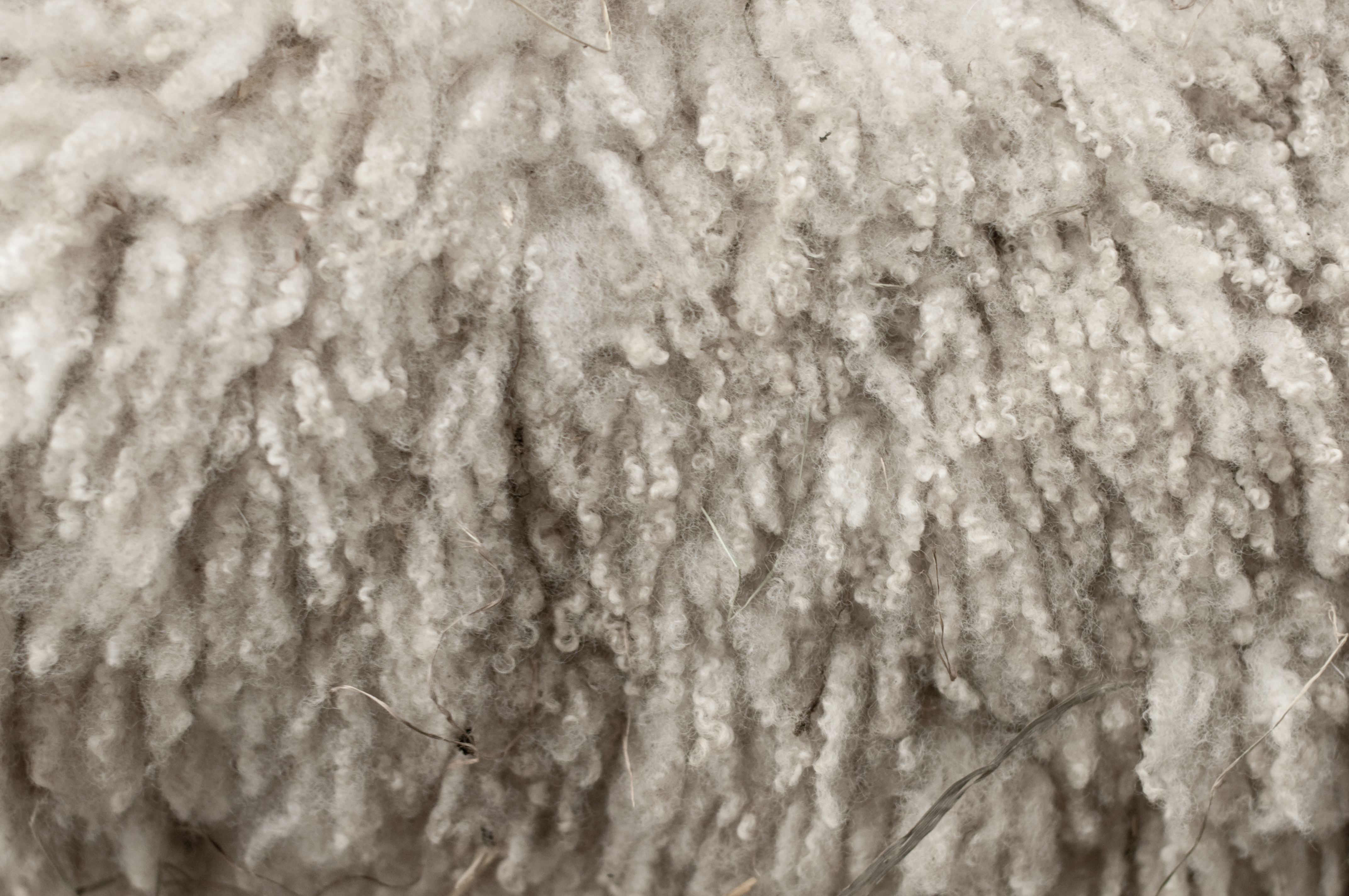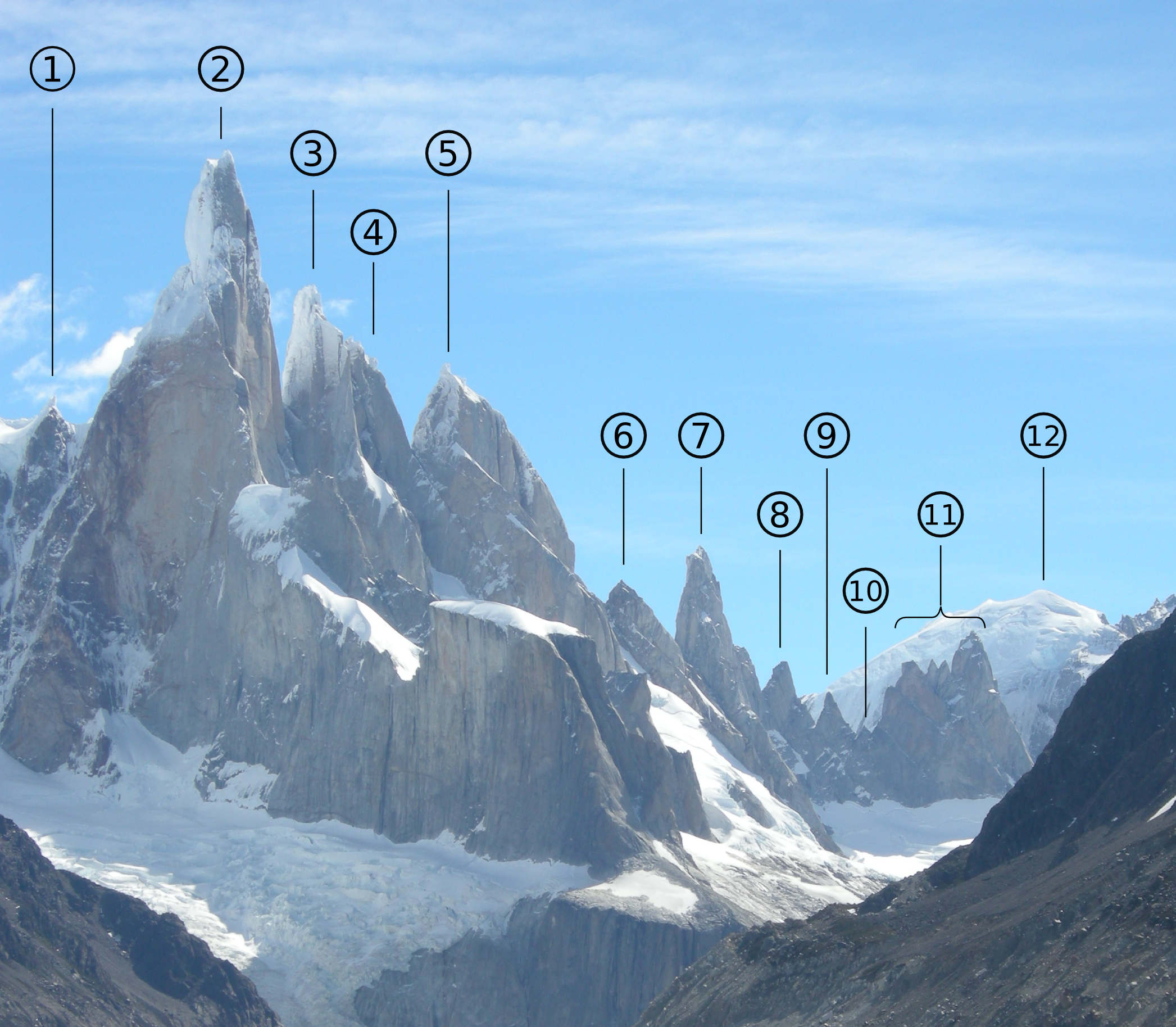|
El Calafate
El Calafate, also called ''Calafate'', is a city in the Argentine province of Santa Cruz, in Patagonia. It is located on the southern border of Lago Argentino, in the southwest part of the province (about northwest of Río Gallegos). The name of the city is also the name of a small bush, with yellow flowers and dark-blue berries, that is very commonly seen in the region—the calafate (''Berberis buxifolia''). The word comes from the word , which is Spanish for 'caulk'. El Calafate is an important tourist destination, serving as the hub for visitors of different parts of Los Glaciares National Park, Perito Moreno Glacier, Cerro Chaltén, and Cerro Torre, in addition to the area surrounding Lago Argentino. History The modern history of El Calafate began in the initial decades of the 20th century, when the area was simply a sheltering place for wool traders. The town was officially founded in 1927 by the government of Argentina in a bid to promote settlement, but it was ... [...More Info...] [...Related Items...] OR: [Wikipedia] [Google] [Baidu] |
List Of Cities In Argentina
This is a list of city, cities in Argentina. List of Argentine cities Over 150,000 inhabitants 45,000 to 150,000 inhabitants This is a list of the localities of Argentina of 45,000 to 150,000 inhabitants ordered by amount of population according to the data of the 2001 INDEC Census. * San Nicolás de los Arroyos (Buenos Aires) 133,602 * San Rafael, Mendoza, San Rafael (Mendoza) 104,782 * Rafael Castillo, Buenos Aires, Rafael Castillo (Buenos Aires) 103,992 * Trelew (Chubut) 103,305 * Santa Rosa, La Pampa, Santa Rosa (La Pampa) 101,987 * Tandil (Buenos Aires) 101,010 * Villa Mercedes, San Luis, Villa Mercedes (San Luis) 97,000 * Puerto Madryn (Chubut) 93,995 * Morón (Buenos Aires) 92,725 * Virrey del Pino (Buenos Aires) 90,382 * Caseros, Buenos Aires, Caseros (Buenos Aires) 90,313 * San Carlos de Bariloche (Río Negro) 90,000 * Maipú, Mendoza, Maipú (Mendoza) 89,433 * Zárate, Buenos Aires Province, Zárate (Buenos Aires) 86,686 * Burzaco (Buenos Aires) 86,113 ... [...More Info...] [...Related Items...] OR: [Wikipedia] [Google] [Baidu] |
Berberis Buxifolia
''Berberis microphylla'', common name box-leaved barberry and Magellan barberry, in Spanish calafate and michay and other names, is an evergreen shrub, with simple, shiny box-like leaves. The calafate is native to southern Argentina and Chile and is a symbol of Patagonia. ''Berberis microphylla'' should not be confused with '' Mahonia microphylla'', native to China. Description The bush grows to a height of . It has many arching branches, each covered in many tripartite spines. The bush has many small yellow flowers in summer. It produces blue-black berries. Uses Its edible blue-black berries are harvested for jams, but are eaten fresh too - a legend tells that anyone who eats a calafate berry will be certain to return to Patagonia. It is also used as an additive in alcoholic beverages such as calafate beer. The calafate is grown commercially for its fruit, potential medical uses and as a garden plant or bonsai. Its wood is used to make a red dye. The cultivar A cultivar is ... [...More Info...] [...Related Items...] OR: [Wikipedia] [Google] [Baidu] |
Comodoro Rivadavia
Comodoro Rivadavia (), often shortened to Comodoro ( ), is a city in the Patagonian Provinces of Argentina, province of Chubut Province, Chubut in southern Argentina, located on the San Jorge Gulf, an inlet of the Atlantic Ocean, at the foot of the Chenque Hill. Comodoro Rivadavia is the most important city of the San Jorge Basin, and is the largest city in Chubut as well as the Southernmost settlements#Settlements of more than 1,000 inhabitants south of 45°S, largest city south of the 45th parallel south, southern 45th parallel. The city is often referred to simply as ''Comodoro''. It was at one time the capital of the Comodoro Rivadavia Territory, which existed from 1943 to 1955. The territory was a part of Chubut before and after its creation, and the city became the capital of the Escalante Department. It had a population of 137,061 at the , and grew to 182,631 by the 2010 census. Comodoro Rivadavia is a commercial and transportation center for the surrounding region, the larg ... [...More Info...] [...Related Items...] OR: [Wikipedia] [Google] [Baidu] |
Esquel
Esquel is a town in the northwest of Chubut Province in Argentine Patagonia. It is located in Futaleufú Department, of which it is the government seat. Esquel is the home station for “La Trochita,” a historic narrow gauge railway known in English as “The Old Patagonian Express.” Esquel is also known for its ski area, “La Hoya,” and as a gateway city to Los Alerces National Park, a UNESCO protected reserve featuring some of the oldest trees in South America. The name Esquel derives from one of two Tehuelche words: one meaning "marsh" and the other meaning "land of burrs", which refers to the many thorny plants including the pimpinella, and the other meaning herbaceous plants whose fruits, when ripe, turn into prickly burrs that stick to the animals' skins and wool or people's clothes as a way of propagation. History The founding of the town dates back to the arrival of Welsh immigrants in Chubut in 1865. The settlement was created on 25 February 1906, as an extens ... [...More Info...] [...Related Items...] OR: [Wikipedia] [Google] [Baidu] |
El Chaltén
El Chaltén is a small mountain village in Santa Cruz Province, Argentina. It is located on the riverside of Rio de las Vueltas, within the Los Glaciares National Park (section ''Reserva Nacional Zona Viedma'') near the base of Cerro Torre and Cerro Fitz Roy spires, both popular for climbing. It is north of El Calafate. It is also a popular base for hiking numerous trails, such as those to the base of surrounding peaks and glacial lakes, such as Laguna Torre and Laguna de los Tres (near the base of Fitz Roy). For those reasons, El Chaltén was named Argentina's Trekking Capital or Capital Nacional del Trekking. In 1985, Argentina and Chile had a border dispute over El Chaltén. There was no war, and El Chaltén was awarded to Argentina. Homes, government buildings, and flags of Argentina went up to mark the city settlement. The town is located at the edge of the Southern Patagonian Ice Field and about 350 inhabitants live there throughout all the seasons of the year. Snow ... [...More Info...] [...Related Items...] OR: [Wikipedia] [Google] [Baidu] |
Socioeconomics
Economic sociology is the study of the social cause and effect of various economic phenomena. The field can be broadly divided into a classical period and a contemporary one, known as "new economic sociology". The classical period was concerned particularly with modernity and its constituent aspects, including rationalisation, secularisation, urbanisation, and social stratification. As sociology arose primarily as a reaction to capitalist modernity, economics played a role in much classic sociological inquiry. The specific term "economic sociology" was first coined by William Stanley Jevons in 1879, later to be used in the works of Émile Durkheim, Max Weber and Georg Simmel between 1890 and 1920. Weber's work regarding the relationship between economics and religion and the cultural " disenchantment" of the modern West is perhaps most representative of the approach set forth in the classic period of economic sociology. Contemporary economic sociology may include studies ... [...More Info...] [...Related Items...] OR: [Wikipedia] [Google] [Baidu] |
Ecotourism
Ecotourism is a form of nature-oriented tourism intended to contribute to the Ecological conservation, conservation of the natural environment, generally defined as being minimally impactful, and including providing both contributions to conservation and environmental education. The definition sometimes also includes being financially beneficial to the host community or making conservation financially possible. There are a range of different definitions, and the correct definition of the term was an active subject of debate as of 2009. The term is also used more widely by many organizations offering nature tourism, which do not focus on being beneficial to the environment. Since the 1980s, ecotourism has been considered an important endeavor by environmentalists for conservation reasons. Organizations focusing on ecotourism often make direct or indirect contributions to conservation or employ practices or technology that reduce impacts on the environment. However (according to Bu ... [...More Info...] [...Related Items...] OR: [Wikipedia] [Google] [Baidu] |
Perito Moreno National Park
Perito Moreno National Park () is a National parks of Argentina, national park in Argentina. It is located in the western region of Santa Cruz Province (Argentina), Santa Cruz Province on the border with Chile. It has an area of of mountains and valleys at a height of above sea level. History The park is one of the oldest in Argentina having been established in 1937. It is named in honour of the explorer Francisco Moreno. It was expanded in 2013 with a donation from Tompkins Conservation. The co-founder of Tompkins Conservation, Douglas Tompkins, Doug Tompkins first became intrigued by Perito Moreno National Park in 1968 as he passed by the area on a climbing expedition and saw Monte San Lorenzo, Cerro San Lorenzo, Patagonia's second highest peak. He visited the park in 1991 with friends Yvon Chouinard and Rick Ridgeway and the following year negotiated the purchase of roughly of private land within the park, which his organization managed as wildlife habitat and allowed to rew ... [...More Info...] [...Related Items...] OR: [Wikipedia] [Google] [Baidu] |
Government Of Argentina
The government of Argentina, within the framework of a federal system, is a presidential system, presidential Representative democracy, representative democratic republic. The president of Argentina is both head of state and head of government. Executive power is exercised by the president. Legislative power is vested in the Argentine National Congress, National Congress. The Judiciary is independent from the Executive and from the Legislature, and is vested in the Supreme Court of Argentina, Supreme Court and the lower national tribunals. From the own government is also called Presidency of the Nation (). Executive branch The current composition of the executive branch includes solely the President of Argentina, president, who is the head of state and is formally given the power over the administration to follow through with the interests of the nation. The president is also the chief of the Argentine Armed Forces. The president and the List of vice presidents of Argentina, v ... [...More Info...] [...Related Items...] OR: [Wikipedia] [Google] [Baidu] |
Wool
Wool is the textile fiber obtained from sheep and other mammals, especially goats, rabbits, and camelids. The term may also refer to inorganic materials, such as mineral wool and glass wool, that have some properties similar to animal wool. As an animal fiber, wool consists of protein together with a small percentage of lipids. This makes it chemically quite distinct from cotton and other plant fibers, which are mainly cellulose. Characteristics Wool is produced by follicles which are small cells located in the skin. These follicles are located in the upper layer of the skin called the epidermis and push down into the second skin layer called the dermis as the wool fibers grow. Follicles can be classed as either primary or secondary follicles. Primary follicles produce three types of fiber: kemp, medullated fibers, and true wool fibers. Secondary follicles only produce true wool fibers. Medullated fibers share nearly identical characteristics to hair and are long but ... [...More Info...] [...Related Items...] OR: [Wikipedia] [Google] [Baidu] |
Cerro Torre
Cerro Torre is one of the mountains of the Southern Patagonian Ice Field in South America. It is located on the border dividing Argentina and Chile, west of Fitz Roy (also known as Cerro Chaltén). At , the peak is the highest of a four mountain chain: the other peaks are Torre Egger (), Punta Herron, and Cerro Standhardt. The top of the mountain often has a mushroom of rime ice, formed by the constant strong winds, increasing the difficulty of reaching the actual summit. First ascent Cesare Maestri claimed in 1959 that he and Toni Egger had reached the summit and that Egger had been swept to his death by an avalanche while they were descending. Maestri declared that Egger had the camera with the pictures of the summit, but this camera was never found. Inconsistencies in Maestri's account, and the lack of bolts, pitons or fixed ropes on the route, have led most mountaineers to doubt Maestri's claim. In 2005, Ermanno Salvaterra, Rolando Garibotti and Alessandro Beltrami, after ... [...More Info...] [...Related Items...] OR: [Wikipedia] [Google] [Baidu] |
Cerro Chaltén
Monte Fitz Roy (also known as Cerro Chaltén, Cerro Fitz Roy, or simply Mount Fitz Roy) is a mountain in Patagonia, on the border between Argentina and Chile.MONTE FITZ ROY ''Andes Hand Book, www.andeshandbook.org'', accessed 21 June 2021 /ref> ''www.interpatagonia.com'', accessed 21 June 2021 It is located in the |








